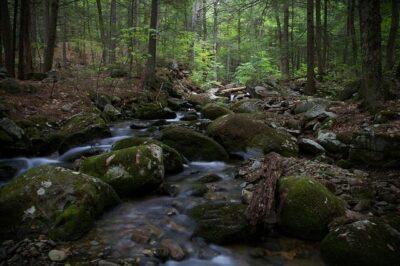All living creatures require water in order to survive. In fact, scientists who search for extraterrestrial life beyond our solar system consider the presence of liquid water to be an essential criterion for the possible presence of life on other planets.
Humans can survive weeks without food, but they only can survive about three days without water! Although many parts of the U.S. are blessed with an abundance of fresh, drinkable, surface water, there are many arid regions where this essential element of life is far more difficult to find. Thus, the ability to find fresh, drinkable water while adventuring in the wilderness is an essential skill.
The step to finding fresh water in the wilderness is to obtain, carry and learn how to read a topographic map; this handy tool will not only display the details of the terrain you are traveling in, but is also will reveal any sources of fresh water in the area. Thus, leaning to determine your approximate position on the map by using the surrounding terrain features is of paramount importance, because doing so will enable you to decide which direction you need to travel to reach water sources on your map.
Of course, water always flows downhill, so you should always look for creeks, rivers, ponds and lakes in the valleys between mountains and in the lowest-lying areas in flatter terrain. Another trick for obtaining water in wooded terrain is either to dig up the roots or cut the branches from trees; then, cut them into short sections and stand them up vertically in some sort of pan or trough to allow the water to seep from them. In fact, some trees and vines contain a considerable amount of fresh water. Using this method can be very productive if the right plants are chosen.
The Life-Saving Water Filter That Purifies River Water!
But in more arid regions, surface water is often difficult or even impossible to find. If in such a location, you should look for the presence of water-loving plants and trees such as birches, alders, cottonwoods and willows, since these are good indications of subsurface water sources. Also, another good place to look for subsurface water sources in arid regions is in the outside of a bend in a dry creek bed. Thus, by digging a hole or ditch in these areas and allowing the water to seep into them from below ground, you often can obtain drinkable water in areas where there are no sources of surface water.
Yet another method for obtaining fresh water in arid terrain is to build a “solar still” by first digging a hole in the ground deep enough to encounter moist soil and then placing a catch basin such as a cup in the bottom of the hole before covering it with a sheet of plastic, such as a garbage bag; then, secure the sheet with rocks to hold it in place. After that, place a small rock on top of the plastic sheet, directly above the catch basin, so that as the water condenses on the underside of the plastic sheet, it will then run downhill and drip into the catch basin.
Story continues below video
If this isn’t possible and you’re traveling in barren, rocky terrain, then the best place to look for water is in depressions, caves or crevices in the rock, where water can accumulate. Last but not least, you can sometimes use animals to find sources of fresh drinking water. For instance, some animal species, such as grazing animals and especially feral or wild pigs, never stray far from a source of fresh drinking water since they require large amounts of this precious resource to digest their food. In addition, many species of birds, such as pigeons and mourning doves, always visit fresh water sources after leaving their roosts in the morning and before returning to their roosts in the evening. By noting their direction of flight during these times of day and following them, you can find fresh water.
It should be noted that even the clearest mountain streams often contain harmful bacteria, and you should always carry some means of purifying any fresh water source. However, if such tools are unavailable, you can construct a crude water filter by pouring it through charcoal from a fire and then purifying it by boiling it.
What advice would you add on finding drinking water? Share your thoughts in the section below:
 Off The Grid News Better Ideas For Off The Grid Living
Off The Grid News Better Ideas For Off The Grid Living





